
How to Improve Customer Trust with Enhanced Estimated Delivery Dates
Discover how enhanced estimated delivery dates can boost your e-commerce sales. Learn practical strategies to improve customer satisfaction today!
Shipping, Tracking & Notifications
Boost customer experience and reduce support tickets
Realtime order and shipment tracking
Proactive order and shipping notifications
AI-Enhanced Discounted Labels
Predictive pre-purchase estimated delivery dates
Self-Serivce branded order tracking
Effortless experience delivered
Identify and Resolve Order Issues
Realtime order and shipment tracking
Make returns profitable and delight customers
Flexibility to define any return destinations & conditions
Simplify returns for your customers and team
Incentivize exchanges over returns
Returns management made easy for your team
Returns management made easy for your team
Understand why your customers are returning
In-Store & Curbside Pickup
Unify the online and the in-store experience
Hassle-free pickup experience for customers
In-Store dashboard to keep operations streamlined
In-Store and Online orders unified
Drive foot-traffic to your stores
Shipping, Tracking & Notifications
Boost customer experience and reduce support tickets
Realtime order and shipment tracking
Proactive order and shipping notifications
AI-Enhanced Discounted Labels
Predictive pre-purchase estimated delivery dates
Self-Serivce branded order tracking
Effortless experience delivered
Identify and Resolve Order Issues
Realtime order and shipment tracking
Make returns profitable and delight customers
Flexibility to define any return destinations & conditions
Simplify returns for your customers and team
Incentivize exchanges over returns
Returns management made easy for your team
Returns management made easy for your team
Understand why your customers are returning
In-Store & Curbside Pickup
Unify the online and the in-store experience
Hassle-free pickup experience for customers
In-Store Dashboard to keep operations streamlined
In-Store and Online orders unified
Drive foot-traffic to your stores
Boost customer experience and reduce support tickets
Realtime order and shipment tracking
Proactive order and shipping notifications
AI-Enhanced Discounted Labels
Predictive pre-purchase estimated delivery dates
Self-Serivce branded order tracking
Effortless experience delivered
Make returns profitable and delight customers
Flexibility to define any return destinations & conditions
Simplify returns for your customers and team
Incentivize exchanges over returns
Returns management made easy for your team
Equip your team for precise return checks.
Understand why your customers are returning
Unify the online and the in-store experience
Hassle-free pickup experience for customers
In-Store Dashboard to keep operations streamlined
In-Store and Online orders unified
Drive foot-traffic to your stores
Find the answer to all your questions
Take a step by step trip through our functionality to see how we can improve your ecommerce processes.
Explore the most comon questions about WeSupply
Calculate the ROI that WeSupply can bring you
Request a no strings attached review of your current shopping experience and missed conversion opportunities
Read actionable articles on how to optimize your post-purchase experience and decrease support tickets
Get inspired by stories of how our customers implemented an effortless post-purchase experience
Wondering if WeSupply is a good fit for you? Read through our use cases to see how we can help you increase conversion & improve CX!
A Deep Dive into Top Companies' Order Tracking & Returns Strategy
Find the answer to all your questions
Explore the most comon questions about WeSupply
Calculate the ROI that WeSupply can bring you
Request a no strings attached review of your current shopping experience and missed conversion opportunities
Take a step by step trip through our functionality to see how we can improve your ecommerce processes.
Read actionable articles on how to optimize your post-purchase experience and decrease support tickets
Get inspired by stories of how our customers implemented an effortless post-purchase experience
A Deep Dive into Top Companies' Order Tracking & Returns Strategy
Wondering if WeSupply is a good fit for you? Read through our use cases to see how we can help you increase conversion & improve CX!
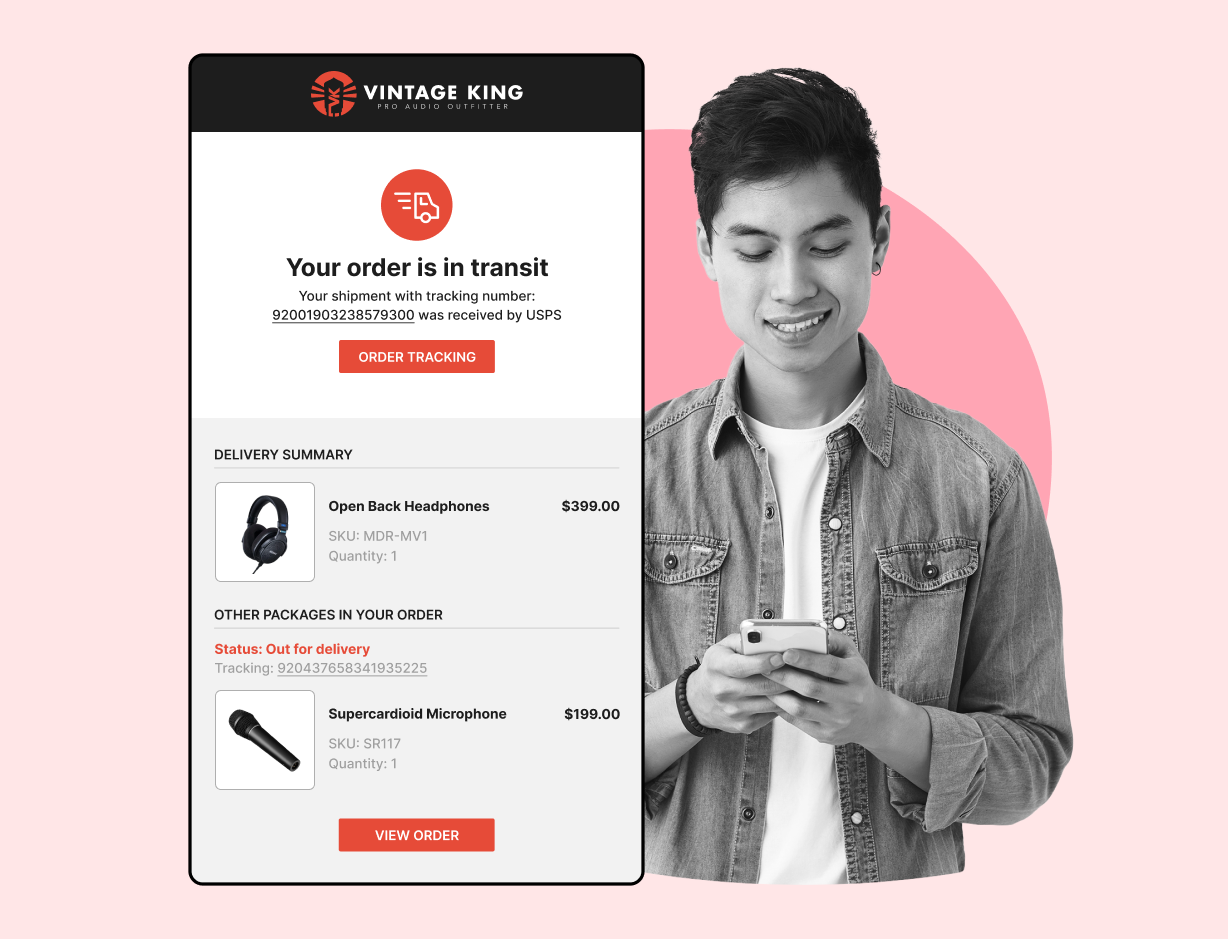
In today’s fast-paced ecommerce environment, meeting customer expectations goes far beyond delivering the right product—it’s about delivering it on time, with clarity and convenience. One of the most common challenges ecommerce businesses face is managing split shipments. These occur when a single customer order is divided into multiple packages, often shipped from different locations or at different times.
While split shipments can be operationally necessary, they also present a risk: confusion. A customer receiving just one part of their order may panic, thinking the rest has gone missing. This highlights the importance of delivering a complete order to avoid confusion and dissatisfaction. If not managed well, split shipments can negatively impact the customer experience by causing frustration and uncertainty. Without proactive communication and smart logistics, split shipments can lead to negative reviews, higher customer service inquiries, and decreased trust in your brand.
This article will walk you through how to manage split shipments without confusing your customers—so you can maintain operational efficiency while delivering a seamless, satisfying experience.
A split shipment happens when the products in a single order are sent in two or more packages. This can happen for a variety of logistical or customer-driven reasons. Split orders can occur for several reasons, such as inventory distribution, customer preferences, or product types.
Perhaps your inventory is spread across several fulfillment centers, and multiple items or quantities are only available at specific locations, leading to a split order. Or maybe one item is on backorder and only part of the order is partially ready to ship, while the rest of the order is ready to go. Sometimes, bulky or oversized products, such as large items or large quantities, can’t be shipped in the same box and require splitting. In other cases, the customer might have requested delivery to different addresses, triggering the need for a separate shipment for each location. Split orders and split shipments can also result from these scenarios.
While split shipments are often unavoidable, they don’t have to be a negative experience. The key is understanding when and why they occur—and having systems in place to manage them efficiently and transparently, ensuring the entire order is fulfilled even when split shipments are necessary.
Split shipments can affect more than just your bottom line—they can also impact customer trust and satisfaction. For ecommerce businesses, the cost implications are clear: splitting orders into several shipments can be costly due to increased labor costs, packing materials, and transportation costs. More packages mean higher shipping fees, more packaging materials, and additional labor for picking and packing, as labor costs rise due to the extra handling and packaging required for multiple shipments. There’s also the environmental toll of sending multiple shipments instead of consolidating them, as using more packing materials for several shipments also increases waste.
From a customer’s perspective, confusion is the number-one risk. If they receive part of an order without any communication about the rest, it can negatively affect the customer experience, leading to worry, unnecessary support tickets, or negative reviews. They may question your professionalism, operational efficiency, or commitment to sustainability.
That said, split shipments can also offer benefits—especially when managed well. Customers often appreciate receiving in-stock items faster, even if it means waiting a bit longer for the rest. And in cases like gift orders or multi-address deliveries, splitting is not only expected but preferred.
The bottom line: the way you handle split shipments determines whether they’ll build or break customer trust.
When it comes to split shipments, communication is everything. Customers don’t mind receiving multiple packages if they know it’s going to happen and understand why. The confusion only sets in when expectations aren’t managed.
Start by communicating proactively. If there’s a high likelihood of a split shipment, let customers know on the product page or during checkout. Follow that with a detailed order confirmation email that clearly outlines what items may ship separately and the expected delivery windows for each.
Once the order is processed, send individual shipping confirmation emails for each package. These should include:
Which items are in the shipment
A unique tracking number
A reminder that other packages are on the way
A notification when each package has arrived
A real-time order status page or branded customer portal can go a long way in keeping customers informed. This centralized hub should list all items in the order, their current fulfillment and shipping status, and provide tracking links for each. Transparency in the delivery process helps reduce confusion and ensures customers know exactly where each part of their order is at any time.
Don’t forget customer support. Equip your agents with full visibility into split shipments and train them to explain the situation clearly, confidently, and with empathy. The better your communication, the fewer “Where Is My Order?” (WISMO) tickets you’ll have to deal with.
While some split shipments are inevitable, many are preventable with better inventory control. Monitoring inventory levels and stock levels across all locations is crucial for optimizing logistics operations, improving route planning, and ensuring timely deliveries. A strong inventory management strategy reduces the likelihood that an order will need to be split due to stockouts or location constraints.
Begin with accurate, real-time inventory tracking across all your fulfillment centers. This visibility ensures your system doesn’t allocate items that aren’t actually available in the same location. Whenever possible, consolidate orders in the same fulfillment center to minimize splits, reduce shipping costs, and improve delivery efficiency. A warehouse management system (WMS) can help you monitor and manage stock more efficiently, reduce picking errors, and keep your fulfillment operations running smoothly.
Use demand forecasting tools to analyze purchase trends and seasonality. This helps ensure you have the right stock in the right place at the right time, minimizing the chance of needing to pull from multiple warehouses.
Revisit your replenishment strategies often. Overstocking leads to waste, but understocking can increase split shipments and lost sales. Many brands benefit from just-in-time inventory models, which reduce storage costs while ensuring availability where it matters most.
By tightening up inventory control, you reduce your reliance on split shipping and improve operational efficiency overall.
Technology is one of your biggest allies in managing split shipments without confusion. The right software stack can automate, streamline, and clarify everything from routing to communication.
Start with an advanced Order Management System (OMS). These platforms help determine the most efficient way to fulfill orders, factoring in inventory location, shipping cost, delivery speed, and customer preference. An OMS can automatically route orders to the fulfillment center best equipped to handle the entire shipment—or split it intelligently when needed. Routing orders to the same fulfillment center whenever possible helps reduce split shipments, lowering shipping costs and improving delivery efficiency.
Pair your OMS with a Warehouse Management System (WMS) to improve pick-and-pack accuracy, and a Transportation Management System (TMS) to optimize shipping routes and carrier selection.
Use customer-facing technology too. Platforms like Outvio or ShipStation can consolidate multiple parcels into a single tracking view, reducing confusion. ShipBob, for instance, offers real-time order visibility and lets customers track each part of their order with clear updates and branded notifications.
Finally, invest in data analytics tools to monitor split shipment rates, costs, and patterns. This insight will help you identify areas for improvement and test new fulfillment strategies with measurable results.
Split shipments don’t have to be one-size-fits-all. One of the most effective ways to manage customer expectations is to offer choices.
At checkout, let customers decide: would they prefer to receive available items now and the rest later for faster delivery, or wait for a complete delivery in a single box? This kind of flexibility can dramatically increase satisfaction—especially for customers who are prioritizing convenience, gift delivery, or eco-friendly shipping.
You can also use this opportunity to promote sustainability. Present consolidated shipping as the “greener” choice and incentivize it with small discounts or loyalty points. Many shoppers will opt in if they feel it supports a cause they care about.
By letting customers guide their delivery experience, you not only reduce confusion but also increase their sense of control and satisfaction.
Split shipments come at a cost—literally. Each additional package increases carrier fees, labor, packaging costs, and carbon emissions. The key is minimizing splits wherever possible while managing the financial impact when they do occur. Optimizing fulfillment can also reduce transit times, which helps lower shipping costs and improves delivery speed.
Start by optimizing your warehouse and fulfillment network. Distribute inventory across locations based on geographic demand. For example, if most of your customers are in the Northeast, make sure popular items are stocked there. This reduces the need to pull items from far-off centers and cuts shipping zones and costs.
Negotiate carrier contracts that offer multi-parcel discounts or zone-skipping options to reduce the cost of separate deliveries. Explore regional carriers who may offer better rates for local fulfillment.
Efficient packaging is also critical. Train your team to use box sizes that minimize air space and consolidate more items per parcel. Consider using dynamic packaging algorithms that match orders to the most efficient box size.
And finally, monitor your shipping costs closely. Look for patterns—are certain SKUs or fulfillment centers driving excessive splits? Address those issues head-on to save money and streamline operations.
Not all customers understand why they’re receiving multiple packages—and that misunderstanding is often the root of dissatisfaction. Take the time to educate them.
Use your FAQ pages, product descriptions, and post-purchase emails to explain why split shipments happen. Let them know it could be due to warehouse locations, product availability, or packaging constraints.
You can also use real-time updates to reinforce this transparency. When a shipment goes out, include messaging like, “This is package 1 of 2. The remaining items will arrive shortly in a separate package.” Clear visual progress bars or package tracking timelines can also help customers feel in control.
By proactively educating your customers, you reduce confusion, boost trust, and lower the number of support tickets your team has to handle.
What gets measured gets managed. If you want to improve your split shipment processes, you need to track the right KPIs.
Start with your split shipment rate: how often are orders being split, and what are the root causes? Layer in average shipping costs per order, delivery times, customer satisfaction scores, and support ticket volume.
Use data analytics to identify problem areas, such as specific products that are frequently split or fulfillment centers that are underperforming. Benchmark your performance against industry standards to see how you stack up.
Don’t forget to collect feedback directly from customers. Simple post-purchase surveys can tell you whether customers were satisfied with the shipping process and if they found the communication clear.
By tracking these metrics and acting on the insights, you can iterate on your strategy and make informed decisions that drive both cost savings and customer happiness.
Effectively managing split shipments is essential for ecommerce brands that want to keep customer satisfaction high while controlling shipping costs. When split shipments occur—whether due to inventory being divided across different warehouses or items being shipped on different days—following best practices can help avoid partial shipments, reduce higher shipping costs, and ensure a smooth delivery experience. Here’s how businesses can optimize their approach:
Centralize Order Review Before Shipping: Before any single order is shipped, review it for possible consolidation opportunities. If items are available at the same warehouse, combine them into one package to avoid unnecessary partial shipments and reduce shipping costs.
Strategically Allocate Inventory: Distribute stock across warehouses based on demand patterns and geographic data. This minimizes the need to split shipments between different warehouses and helps ensure that most orders can be fulfilled from a single location.
Set Clear Internal Guidelines: Establish clear protocols for when to split shipments and when to hold an order for complete fulfillment. This helps your team make consistent decisions that balance customer expectations with operational efficiency.
Monitor and Analyze Split Shipment Data: Regularly track how often split shipments occur, which products are most frequently divided, and the associated costs. Use this data to identify trends and adjust your fulfillment strategy to avoid unnecessary splits.
Optimize Packing and Shipping Schedules: Coordinate shipping schedules so that, when split shipments are unavoidable, packages are shipped as close together as possible. This reduces the likelihood of customers receiving multiple packages on widely different days, which can lead to confusion or dissatisfaction.
Minimize Packaging Waste: When multiple packages are necessary, use appropriately sized boxes and eco-friendly materials to reduce costs and environmental impact, while still protecting the products during transit.
Train Staff on Split Shipment Protocols: Ensure your fulfillment team understands the importance of minimizing split shipments and is trained to follow best practices for packing, shipping, and communicating with customers.
By implementing these best practices, ecommerce businesses can effectively manage split shipments, keep shipping costs in check, and deliver a positive experience—even when orders are divided and shipped from different warehouses or on different days.
When managing split shipments, it’s just as important to avoid the pitfalls as it is to follow best practices. Some common mistakes include:
Lack of inventory visibility, leading to unnecessary splits or fulfillment errors.
No communication about split shipments, causing confusion and frustration.
Overlooking customer preferences, like delivery speed or packaging.
Ignoring analytics, which means missing out on opportunities to reduce costs and improve service.
Relying too much on manual processes, which increases errors and reduces scalability.
By steering clear of these mistakes, your business will be better positioned to handle split shipments confidently and effectively.
Improving how you manage split shipments doesn’t happen overnight—it requires a phased, intentional approach.
Start by auditing your current process. Where are splits most common? Are they being communicated clearly? Are customers complaining?
Next, implement the tools and strategies discussed above, from inventory optimization to OMS solutions to better communication templates. Provide training to your warehouse staff and customer service team to ensure alignment.
As your systems improve, continue to monitor your KPIs. Use A/B testing to try new fulfillment workflows, communication styles, or customer delivery options.
Optimization is an ongoing process, but the payoff is clear: lower costs, fewer complaints, and more loyal customers.
Split shipments are often unavoidable—but confusion doesn’t have to be. With WeSupply, you can turn multi-package deliveries into clear, seamless customer experiences that build trust, reduce support tickets, and keep your brand looking sharp.
Whether you’re shipping from multiple warehouses, managing backorders, or working with multiple carriers, WeSupply empowers you to deliver full transparency, fast communication, and real-time shipment insights—all in one place.
Multi-Shipment Support
Even if an order is split, WeSupply helps identify which items have shipped, which haven’t, and which shipper is handling what—no more guesswork for your customers or team.
Spot and Resolve Delayed Shipments Instantly
Get real-time alerts for stalled or delayed shipments, then notify customers automatically before they have to ask. Reduce WISMO inquiries and protect customer satisfaction.
Undeliverable or Lost Package Resolution Tools
Detect failed delivery attempts or lost items early, contact the carrier or customer proactively, and simplify claims or re-shipments—right from your dashboard.
Bulk Communication at Scale
Quickly send customized updates to customers affected by the same issue (like weather delays or system glitches) without writing 1:1 emails.
Live Status Updates on All Shipments
Keep your entire team informed with a user-friendly interface and automated workflows that highlight current and past shipment statuses.
EasyPost Luma Integration
Tap into AI-powered delivery date predictions for smarter, more accurate EDDs—across all split shipments.
Customizable Workflows & Reporting
Optimize your logistics with real-time shipment analytics and reports. Track the number of split shipments, detect fulfillment bottlenecks, and improve operations.
With WeSupply, split shipments don’t have to feel like separate orders. Instead, they become part of a smooth, connected, and transparent post-purchase experience your customers will actually appreciate.
From real-time tracking to proactive problem-solving—WeSupply helps you manage complexity without ever sacrificing clarity.
👉 Ready to turn split shipments into a customer loyalty advantage? Schedule your demo today and launch as soon as tomorrow.
Keep your customers engaged during the delivery experience
Book a quick call with our experts to see how WeSupply can help you engage your customers with relevant updates through the right channel, at the right time.
Combat inconvenience with proactivity & self service
Book a quick call with our experts to see how WeSupply can help you make returns easy for your customers with a beautiful, self-service solution that makes their experience easier while also providing new ways to lower costs and earn back revenue.
Split shipments are a natural part of modern ecommerce, but they don’t have to confuse or frustrate your customers.
With WeSupply, you can proactively manage expectations through real-time tracking, branded multi-shipment notifications, and a centralized order journey dashboard that shows all packages in one place—even when they ship from different locations. By integrating with over 1,000 carriers and using AI-powered tools like EasyPost’s Luma for accurate delivery predictions, you gain full visibility into every shipment while keeping customers informed at every step. You can even resolve delays, undeliverable orders, and lost packages with ease, while sending bulk updates when needed to reduce WISMO tickets and negative reviews.
Ultimately, managing split shipments with the right technology turns a logistical challenge into an opportunity to build trust, deliver transparency, and delight your customers—all while streamlining your operations behind the scenes.
1. What is a split shipment in ecommerce?
A split shipment occurs when a single order is shipped in multiple packages, usually due to inventory location, backorders, or oversized items.
2. Why do ecommerce orders get split into multiple shipments?
Orders are split due to stock being in different warehouses, product availability, packaging constraints, or customer requests like multi-address deliveries.
3. How can split shipments affect customer satisfaction?
Without clear communication, split shipments can cause confusion, missed expectations, and negative reviews. Transparency reduces WISMO tickets and boosts trust.
4. How does WeSupply help customers track split shipments?
WeSupply consolidates all split shipments into one branded tracking page, showing real-time status updates—even if packages come from multiple carriers.
5. Can WeSupply reduce WISMO tickets for split shipments?
Yes. With real-time alerts, proactive email/SMS notifications, and full shipment visibility, WeSupply significantly reduces “Where is my order?” inquiries.
6. Does WeSupply integrate with multiple carriers for split shipping?
Absolutely. WeSupply supports 1,000+ carriers—including Parcel, LTL, and same-day—ensuring seamless tracking and communication across all split shipments.
7. Does WeSupply have an Official Shopify App?
Yes. WeSupply has an Official Shopify App. You can download it and start integrating with your Shopify Store.
8. Does WeSupply have an official Magento extension?
Yes, WeSupply has an official extension for Magento. The WeSupply x Magento integration allows for automating order tracking experiences, reducing customer inquiries, automating shipping email and SMS notifications, and providing a fully branded order tracking experience
9. Does WeSupply have an official BigCommerce App?
Yes, WeSupply has an official BigCommerce App. You can integrate WeSupply with your BigCommerce store to improve your post-purchase customer experience.
Learn How To Create Successful Post Purchase Email Campaigns
Build an effective post-purchase email flow that helps you increase customer satisfaction and drive revenue growth!

Discover how enhanced estimated delivery dates can boost your e-commerce sales. Learn practical strategies to improve customer satisfaction today!
Master unified tracking for split or multi shipment orders with our comprehensive guide. Streamline your process and improve efficiency—read more now!

Learn effective strategies for handling shipment exceptions and improving customer communication. Read the article for practical tips and insights.
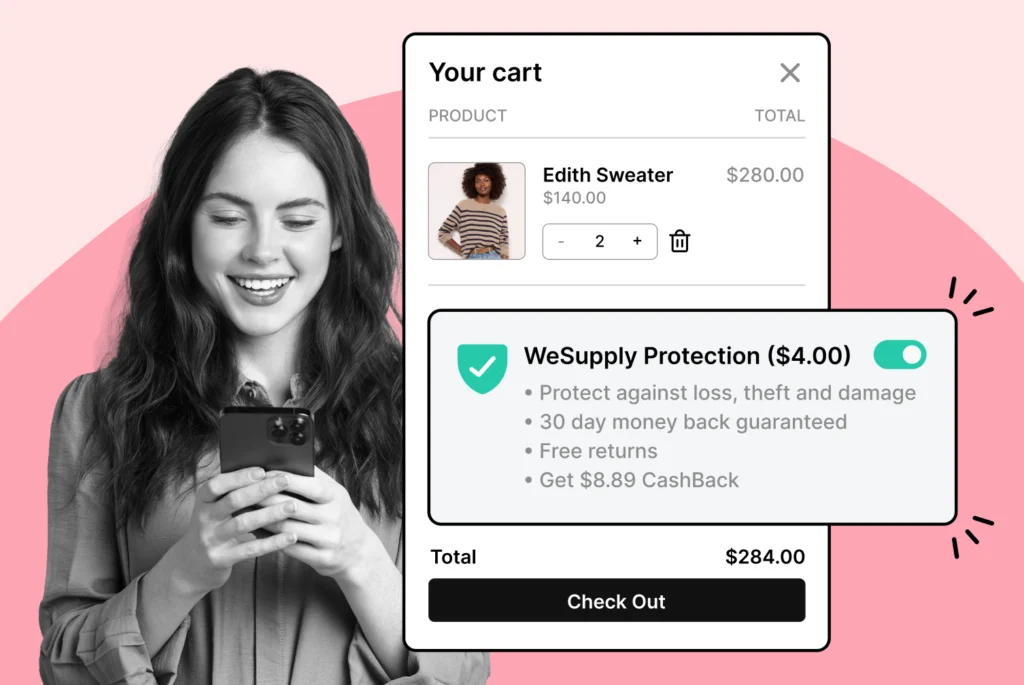
Discover how effective shipping insurance integration can enhance your business efficiency and protect your assets. Read the article for practical insights.
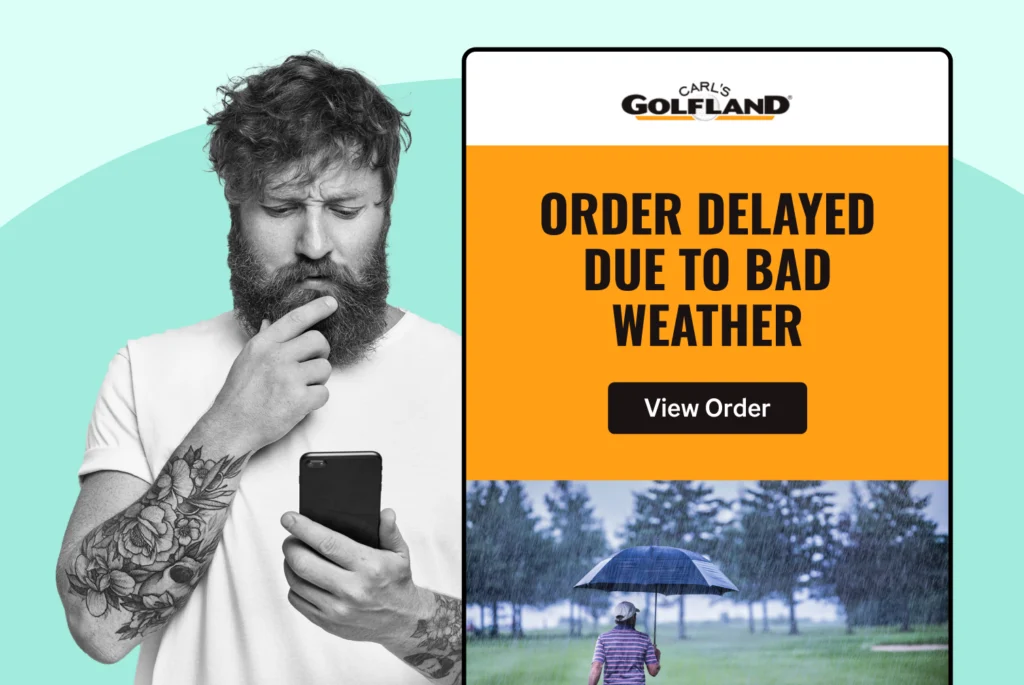
Discover effective strategies to manage your shipments with ease. Streamline your process and enhance your shipping efficiency!

Discover how effective warranty returns management can enhance customer loyalty and strengthen your brand. Read on to transform your return process!
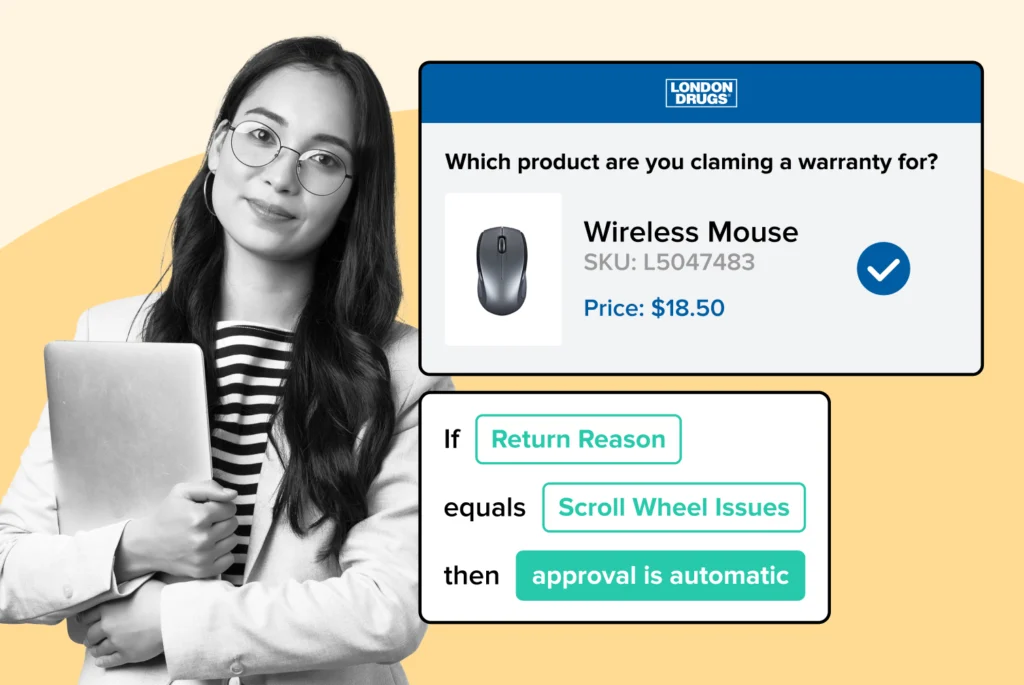
Learn how to streamline warranty returns at scale with practical strategies for efficiency and effectiveness. Read the article for actionable insights.

Create an effective warranty return flow for fragile goods to minimize losses and enhance customer satisfaction. Discover practical steps in our article.
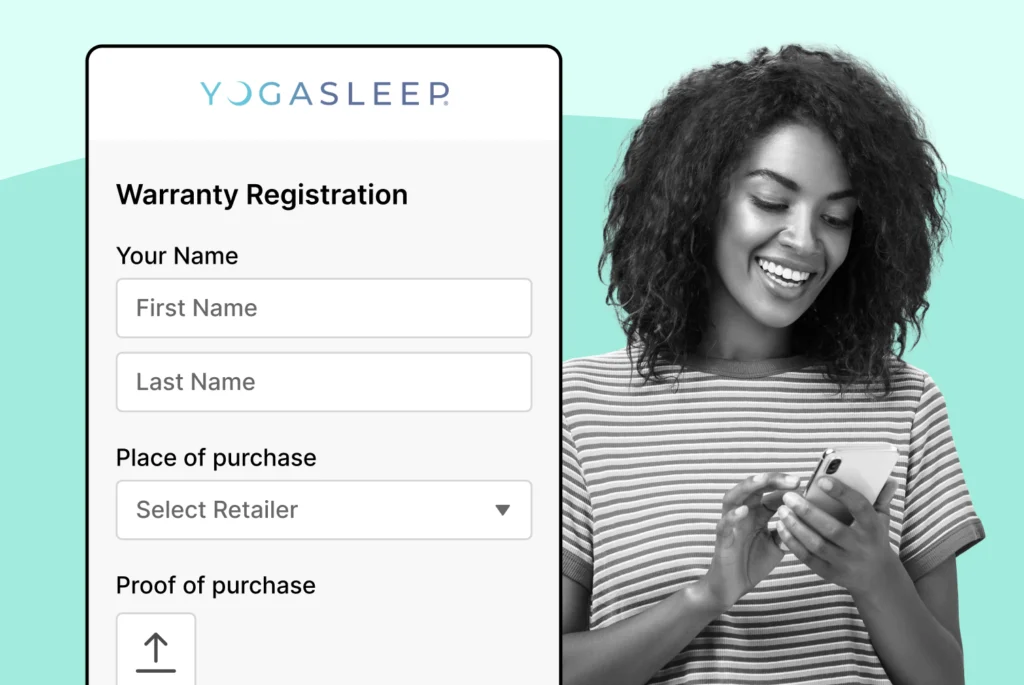
Discover effective strategies to combat warranty fraud and protect your business. Learn best practices for prevention and safeguard your assets. Read more!